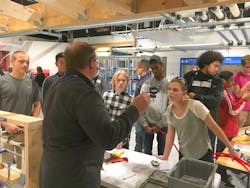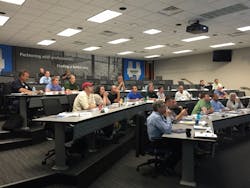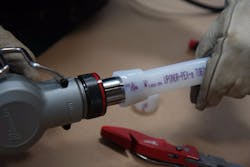4 Realistic Ways Firms Can Overcome the Skilled-Labor Shortage
By MADIE NORRIS, Digital Communications Specialist, Uponor
It’s no secret that industries across North America are feeling the pain of the skilled-labor shortage. It’s been plaguing many of us for the better part of the last decade. Nearly 95% of contractors are having a moderate to difficult time finding skilled workers, according to research conducted by the Commercial Construction Index. That old saying, “there’s beauty in the struggle” doesn’t apply here.
Even though the construction labor shortage is daunting, the good news is we can actually do something about it. You know what they say, if you want something done, you gotta do it yourself.
Here are four realistic ways:
1. Recruit people you typically don’t recruit. It’s time we stop making assumptions about what construction workers look like and start opening our minds to diversifying our teams. Recruit women, veterans, immigrants, people currently working in other skilled-labor industries, boomerangers, and students right out of high school.
2. Invest in training new and long-time workers. The construction industry no longer has the luxury of hiring people with an extensive background in construction. Consider starting a mentoring program and encourage (or maybe even require) industry vets to mentor and pass their knowledge along to beginners. As a manufacturer of PEX piping for commercial and residential plumbing and HVAC applications, our team will even train your crews for you at Uponor Academy or on your job site.
3. Partner with nearby K-12 schools. If you graduated from high school in the U.S. or Canada in the last 10 years, you know the only option presented to most students is a 4-year university. Partner with K-12 schools on career days, in their career centers, or offer paid internships to educate students on other head-of-household options.
4. Adopt new technologies and products. Change is hard, but resisting new technologies won’t do anyone any favors. For example, Uponor PEX pipe is an advanced technology that makes installations simpler; and therefore, more efficient. Some folks have a hard time saying goodbye to the old ways of welding and soldering, but can the industry afford complex installations? Read more on the topic from the Mechanical Hub article, “The chicken or the egg? Advanced piping technologies vs. skilled labor”.
It’s possible to meet the challenge of the skilled-labor shortage by thinking outside the box. So, why not start today?
Focused on new technologies and innovative applications, the author specializes in technical communications at Apple Valley MN-based Uponor. This blog post first appeared here.


